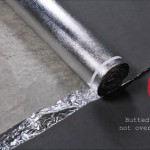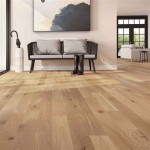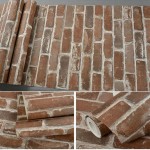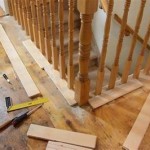Knotty Alder Flooring: A Comprehensive Overview
Knotty alder flooring has steadily gained popularity in recent years, emerging as a desirable alternative to more traditional hardwood options. Its unique aesthetic appeal, combined with its relative affordability and workability, makes it an attractive choice for homeowners and builders alike. This article will delve into the characteristics, benefits, considerations, and maintenance aspects of knotty alder flooring, providing a comprehensive understanding of this increasingly sought-after material.
Alder, scientifically known as *Alnus rubra*, is a fast-growing deciduous tree native to the Pacific Northwest of North America. The term "knotty" refers to the presence of knots within the wood grain, which are remnants of branches that have grown on the tree. These knots, rather than being seen as imperfections, contribute to the distinct, rustic character that defines knotty alder flooring. Unlike clear alder, which is graded for its lack of imperfections, knotty alder celebrates the natural variations and irregularities inherent in the wood.
The appeal of knotty alder flooring stems largely from its visual warmth and natural charm. The knots, varying in size and distribution, provide a visual texture and depth that is absent in more uniform flooring options. This inherent character allows knotty alder to complement a range of architectural styles, from traditional and rustic to contemporary and eclectic. It can be particularly effective in creating a cozy and inviting atmosphere in homes, cabins, and other spaces where a relaxed and natural aesthetic is desired.
Furthermore, knotty alder possesses a consistent, relatively light color, ranging from pale yellow to light reddish-brown. This light hue makes it a versatile canvas for staining, allowing homeowners to customize the floor's appearance to match their specific décor preferences. It readily accepts both light and dark stains, and its grain pattern is generally straight and even, contributing to a uniform and aesthetically pleasing final result.
The Advantages of Choosing Knotty Alder Flooring
Several key advantages contribute to the growing popularity of knotty alder flooring. These advantages extend beyond its aesthetic appeal and encompass factors such as cost, workability, and environmental sustainability.
One of the most significant advantages of knotty alder is its cost-effectiveness. Compared to other hardwood options like oak, maple, or cherry, knotty alder is generally more affordable. This makes it an attractive option for homeowners on a budget who still desire the look and feel of real wood flooring. The lower price point allows for more extensive flooring projects without exceeding budgetary constraints.
Another compelling benefit is its workability. Alder is a relatively soft hardwood, which makes it easier to cut, shape, and install compared to denser woods. This ease of workability translates to lower labor costs for professional installation and simplifies DIY projects for homeowners with some carpentry experience. It also readily accepts nails, screws, and adhesives, further facilitating the installation process. The softer nature of the wood also makes it easier to sand and refinish, allowing for future updates or repairs to the floor's surface.
From an environmental perspective, knotty alder is often considered a more sustainable choice. Alder trees are fast-growing and abundant in the Pacific Northwest, making them a readily renewable resource. Sustainable harvesting practices ensure the long-term health of alder forests. Furthermore, the use of knotty alder, which utilizes portions of the tree that might otherwise be discarded, promotes efficient resource utilization and minimizes waste. Choosing knotty alder can contribute to a more environmentally conscious building project.
Considerations Before Installing Knotty Alder Flooring
While knotty alder offers numerous benefits, there are also several considerations to keep in mind before making a final decision. Understanding these factors will help ensure that knotty alder flooring is the right choice for your specific needs and circumstances.
One important consideration is its relative softness. As mentioned earlier, alder is a softer hardwood compared to species like oak or maple. This means that it is more susceptible to dents, scratches, and wear and tear, particularly in high-traffic areas or homes with pets or young children. While minor imperfections can add to the rustic character of the floor, excessive damage can detract from its overall appearance. To mitigate this, careful consideration should be given to the type of finish applied and the level of foot traffic the floor will endure.
Another factor to consider is the presence of knots themselves. While the knots contribute to the unique aesthetic of the floor, they can also be potential weak points. Over time, knots can become loose or fall out, leaving holes in the floor. While this is less common with properly kiln-dried and installed flooring, it is still a possibility. Regular inspection and maintenance can help prevent this issue. Filling any loose knots with wood filler or epoxy resin can help stabilize them and prevent further deterioration.
Seasonal changes in humidity can also affect knotty alder flooring. Like all wood products, alder is susceptible to expansion and contraction with changes in moisture levels. In humid environments, the wood can absorb moisture and expand, potentially leading to buckling or cupping. Conversely, in dry environments, the wood can lose moisture and shrink, creating gaps between the boards. Proper acclimation of the flooring prior to installation and maintaining a consistent humidity level within the home can help minimize these effects.
Maintaining Knotty Alder Flooring for Longevity
Proper maintenance is crucial for preserving the beauty and extending the lifespan of knotty alder flooring. A consistent cleaning routine and preventative measures can help protect the floor from damage and maintain its aesthetic appeal for years to come.
Regular cleaning is essential for removing dirt, dust, and debris that can scratch or dull the finish. Sweeping or vacuuming the floor regularly, ideally daily or every other day, is recommended. Avoid using vacuums with beater bars, as these can scratch the surface. When mopping, use a damp cloth or mop and a pH-neutral wood floor cleaner. Avoid using excessive water, as this can seep into the seams and damage the wood. Always follow the manufacturer's instructions for cleaning products.
Protecting the floor from scratches and dents is also important. Place mats or rugs in high-traffic areas, such as entryways and hallways. Use furniture pads under the legs of chairs and tables to prevent scratches and dents. Avoid wearing shoes with heels or cleats on the floor. Trim pets' nails regularly to prevent scratching. Take care when moving heavy objects across the floor.
Refinishing the floor may be necessary after several years of use, particularly in high-traffic areas. Refinishing involves sanding down the existing finish and applying a new coat of sealant. This can restore the floor's original luster and protect it from further wear and tear. The frequency of refinishing will depend on the amount of traffic the floor receives and the type of finish applied. Consult with a flooring professional to determine the best refinishing schedule for your specific floor.
Addressing any loose knots promptly is also a key element of maintenance. As mentioned earlier, knots can occasionally become loose or fall out. If this occurs, clean the area around the knot and carefully fill the hole with wood filler or epoxy resin. Sand the filler smooth and apply a matching stain or finish to blend it seamlessly with the surrounding wood. This will prevent further damage and maintain the integrity of the floor.
Knotty alder flooring offers a unique combination of aesthetic appeal, affordability, and workability, making it a compelling choice for homeowners seeking a rustic and natural flooring option. By understanding its characteristics, advantages, considerations, and maintenance requirements, homeowners can make informed decisions and enjoy the beauty and durability of knotty alder flooring for many years to come. Careful planning, proper installation, and consistent maintenance are key to maximizing the value and longevity of this increasingly popular flooring material.

Red Alder Wood Floors Craft Floor

Alder Knotty Rustic Plank Wood Veneer Jso S

Alder Prefinished Hardwood Flooring The Fantastic Floor

Knotty Alder Lumber Cherokee Wood S Plywood More

Red Alder Woodland Custom Wood Flooring Millwork

T G Knotty Alder 3 4 X5 1

Alder Knotty

Red Alder Woodland Custom Wood Flooring Millwork

Red Alder Wood Floors Craft Floor

Knotty Alder Enterprise Wood S
Related Posts








